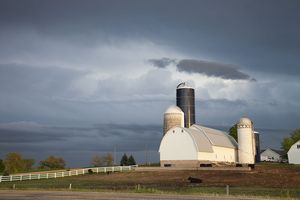No Clear Answer to Whether Ag is in Recession.
 July’s Ag Economists’ Monthly Monitor reported 53% of surveyed agricultural economists believe U.S. row crops are in recession. This is down from 72% in May.
July’s Ag Economists’ Monthly Monitor reported 53% of surveyed agricultural economists believe U.S. row crops are in recession. This is down from 72% in May.
Many farmers argue that the ag economy is already in the midst of a recession due to prolonged poor profit margins. Economists reporting that row crops are in recession cite four consecutive years of weak returns draining cash reserves.
National Corn Growers Association (NCGA) Chief Economist Krista Swanson warns that deep, sustained losses are expected for every major commodity in the U.S., with 2025 and 2026 projected to bring losses exceeding $100 per acre for nearly all major crops. Farmers continue to face low commodity prices and high input costs.
Others argue the sector isn’t in recession. They point to stable or rising land values, strong exports and government support as buffers. The USDA’s 2025 land survey shows farmland averaging $4,170 per acre. This is a 4.3% increase from 2024. Ohio State’s Carl Zulauf notes stable land prices indicate underlying asset strength.
Financial strain is most acute in the Midwest, followed by the Mid-South, West, and Northwest. But conditions vary by commodity type. For instance, in California, milk and beef prices are solid, but tree nuts, grapes, and other specialty crops face trade and demand challenges.
Looking ahead, economists identify trade policy, government farm programs, crop prices, production costs, biofuel policy, interest rates and livestock market strength as driving factors. Provisions in the budget reconciliation legislation and upcoming trade deals could shape farm income in the next year.
